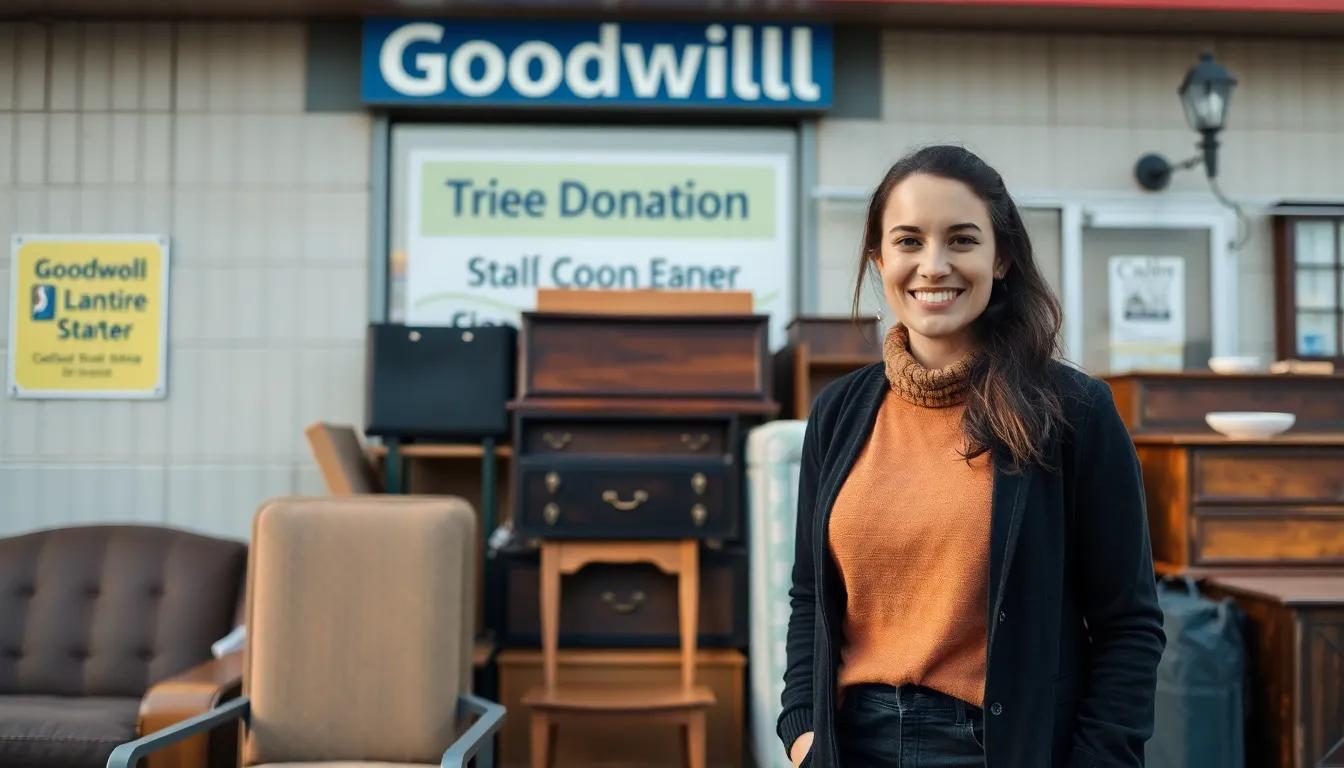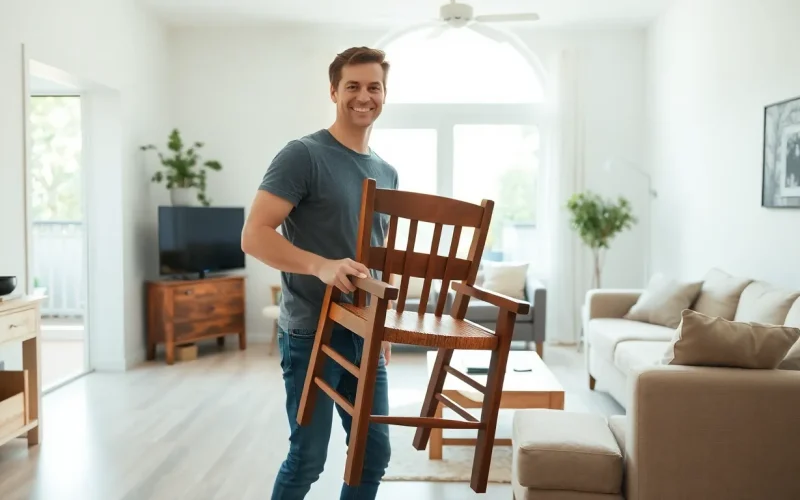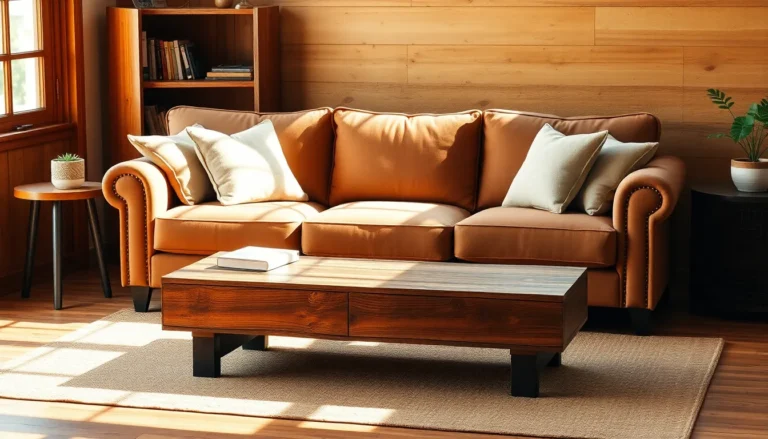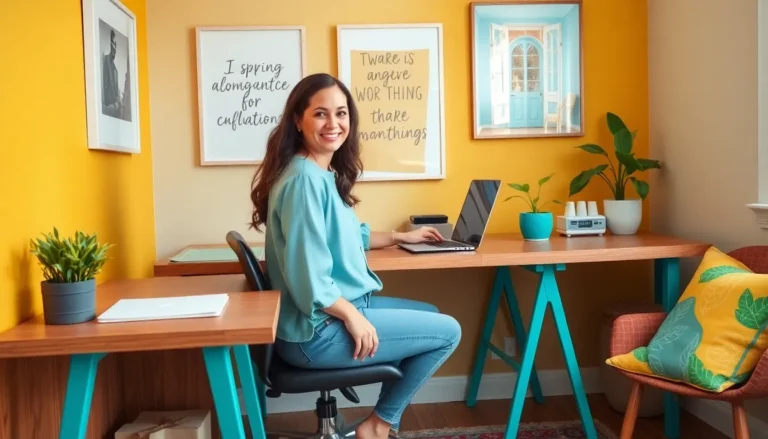Table of Contents
ToggleCluttered spaces can feel like a game of Tetris gone wrong, especially when that old couch refuses to fit anywhere but the living room. Unwanted furniture can be a real eyesore, turning cozy homes into chaotic jungles. But fear not! Getting rid of that pesky furniture doesn’t have to involve a magic wand or a team of ninjas.
Understanding Unwanted Furniture
Unwanted furniture often occupies valuable space, creating clutter and disrupting the aesthetics of a home. Various factors contribute to the decision to dispose of such items.
Common Reasons for Disposing Furniture
Changing lifestyles frequently lead to furniture disposal. Families might downsize or alter their tastes in decor. Dated or damaged furniture also prompts removal, especially when repairs are impractical. Moving to a new location often requires getting rid of items that no longer fit. Other reasons include inheriting unnecessary furniture or simply needing more space. These situations help individuals recognize when it’s time to declutter.
Assessing the Condition of Your Furniture
Evaluating furniture condition involves several key aspects. Examining structural integrity helps determine if an item is salvageable or suited for disposal. Checking for stains, tears, or excessive wear reveals whether repairs are feasible. Analyzing functionality, like furniture’s ability to serve its intended purpose, also guides decisions. If pieces fail to meet practical needs, it’s sensible to consider removal. Making careful assessments allows individuals to prioritize which items to keep or discard.
Donation Options

Donating unwanted furniture benefits both the donor and the community. Local charities often seek out usable items to support their missions, making it a viable option for clearing space.
Local Charities and Organizations
Many local charities and organizations accept furniture donations. Habitat for Humanity, Goodwill, and Salvation Army commonly have programs in place for acquiring furniture. Each organization usually has specific guidelines regarding what they can accept. Furniture items in good condition are often welcomed, so check with the charity about their needs before donating. Some charities even focus on aiding those in need by distributing donated furniture to families or individuals facing difficult situations.
Scheduling a Pickup
Arranging a pickup for donated furniture simplifies the donation process. Many organizations offer free pickup services for larger items, saving time and effort. During the initial contact, inquire about available pickup options, ensuring to provide details about the furniture type and condition. Choosing a day and time that suits both parties facilitates a smooth transition. Many services often provide confirmation of the pickup, ensuring no surprises on the scheduled day.
Selling Your Furniture
Selling unwanted furniture provides a practical way to regain space while possibly earning extra cash. Several options exist to ensure a successful sale.
Online Marketplaces
Online marketplaces simplify the selling process for unwanted furniture. Platforms like Craigslist, Facebook Marketplace, and OfferUp allow sellers to reach local buyers easily. Listing items often requires minimal setup, with users uploading photos and providing descriptions. Competitive pricing attracts potential buyers quickly. Successful transactions depend on clear communication and prompt responses to inquiries. Sellers clear out items and make space in their homes.
Yard Sales and Local Listings
Yard sales offer an effective, community-based option for selling furniture. Organizing a sale attracts neighborhood shoppers looking for affordable deals. Pricing items reasonably encourages quick purchases. Advertising through local social media groups or community boards helps generate interest. Sellers can negotiate prices in person, often resulting in faster sales. Displaying furniture attractively increases visibility and draws potential buyers. Local classifieds also provide a way to advertise sales and reach a broader audience.
Recycling and Disposal
Recycling and proper disposal of unwanted furniture play critical roles in maintaining an organized home. Several options exist that ensure furniture doesn’t clutter living spaces or end up in landfills.
Furniture Recycling Centers
Many cities feature furniture recycling centers that specialize in reclaiming materials from unwanted items. These centers often accept broken or unusable furniture, turning them into new products or materials. Wooden items, metal furniture, and some textiles may find new life through this process. Local directories or websites can help locate nearby recycling centers, providing necessary information on their accepted items and operating hours.
Bulk Trash Pickup Services
Bulk trash pickup services offer a convenient way to dispose of large furniture items intentionally. Curbside collection usually takes place on designated days, allowing individuals to place unwanted furniture outside for pickup. It’s essential to check local regulations, as guidelines may dictate what items are acceptable. Scheduling ahead may also improve chances of timely collection. Some municipalities provide free bulk pickup services, making this an economical choice for many.
Upcycling Ideas
Upcycling offers creative solutions for unwanted furniture, transforming it into functional or aesthetic pieces. These ideas not only reduce waste but also enhance home decor.
Transforming Old Furniture
Transforming old furniture breathes new life into outdated pieces. A wooden dresser, for instance, can become a stylish bathroom vanity with a simple countertop swap. Adding fresh paint can radically change its visual appeal. Bookshelves take on a new role when arranged as a room divider, enhancing space utilization. Upholstering a dining chair in trendy fabric revamps its look entirely. Small changes, like replacing knobs or adding moldings, can make significant impacts.
DIY Projects for Unwanted Items
DIY projects allow individuals to creatively repurpose unwanted items. A coffee table, for example, can be turned into an ottoman with foam padding and fabric. Creating a garden planter from an old wooden chest elevates outdoor spaces. A ladder can serve as a decorative bookshelf when painted and staged with books and decor. Even an unused bench can transform into a unique storage solution by adding a cushion and interior compartments. Engaging in these projects not only reduces clutter but also fosters personal creativity.
Removing unwanted furniture doesn’t have to be a daunting task. By evaluating items carefully and exploring various options like donation, selling, or recycling, individuals can reclaim their space and enhance their home’s aesthetics. Engaging in creative upcycling projects can also transform discarded pieces into something functional and beautiful.
Taking action not only declutters a living space but also contributes to the community and environment. Whether it’s through a charitable donation or a successful yard sale, every effort counts in creating a more organized and inviting home. Embracing these strategies paves the way for a more harmonious living environment.





